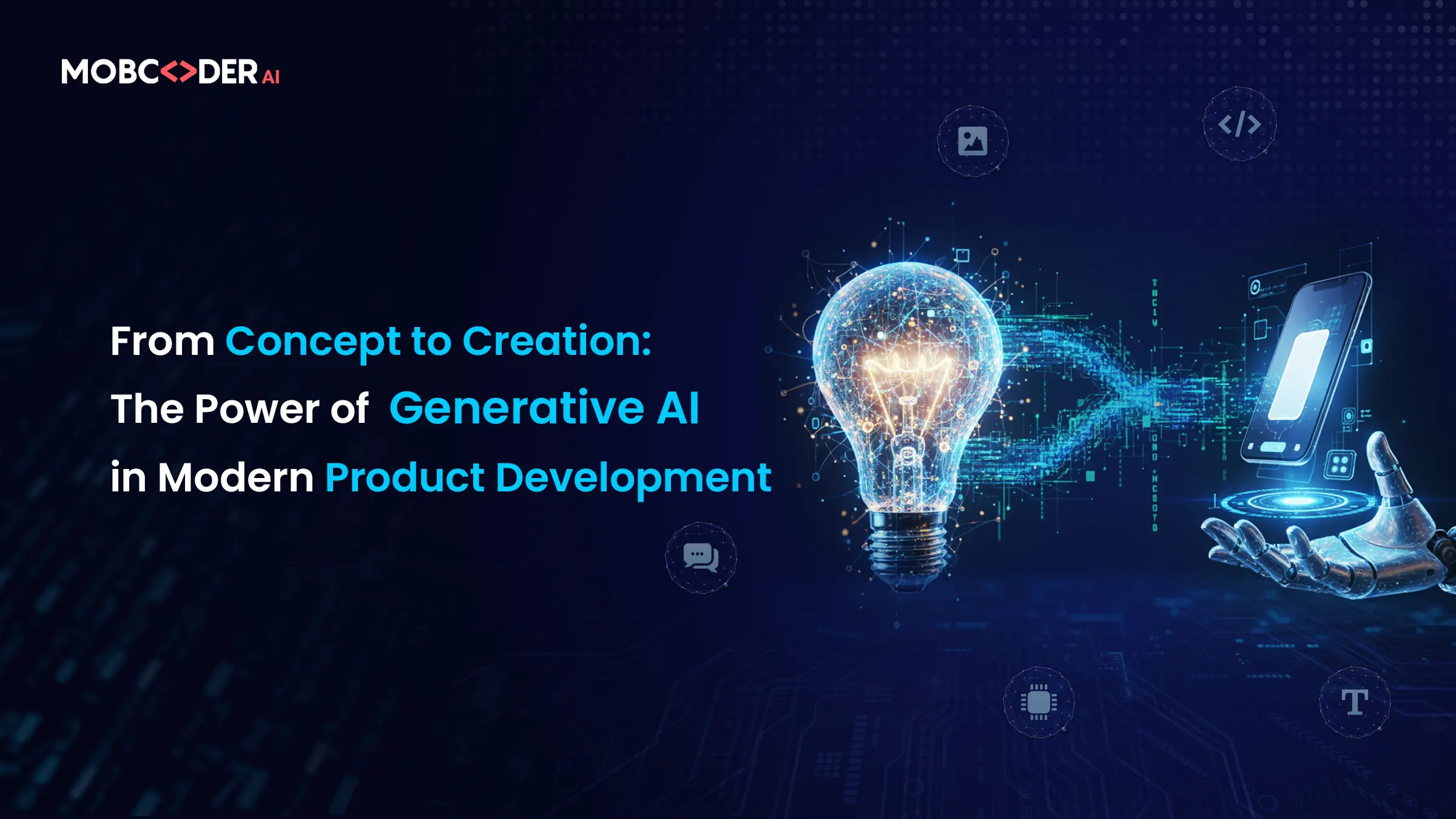May 16, 2025
Chris Chorney
What is Conversational AI?
Why 2025 is the Turning Point for Conversational AI
How Conversational AI is Powering Digital Transformation
Real-World Use Cases of Conversational AI in 2025
The Role of Voice Assistants in 2025
Benefits for Businesses
Challenges and Considerations
What’s Next? Future Trends to Watch
Final Thoughts
At Mobcoder, we believe that the future of business lies in how well companies adapt to digital transformation. And one of the most exciting and powerful tools leading this change in 2025 is Conversational AI. Whether it's chatbots on websites, voice assistants in mobile apps, or smart tools that help businesses respond to customer queries instantly, Conversational AI is making interactions faster, smarter, and more human.
In this blog, we’ll break down what Conversational AI is, why it’s becoming essential in 2025, and how it’s transforming industries around the globe.
Conversational AI refers to technologies like chatbots, voice assistants, and messaging apps that use natural language processing (NLP) and machine learning (ML) to have real-time conversations with users. It understands human language, processes it, and responds intelligently, just like a human would.
You might have already interacted with Conversational AI when:
Also Read - Top Mobile App Development Company In Australia: Why Mobcoder Stands Out
Over the past few years, AI has grown rapidly. But in 2025, we’re seeing a major shift. Companies aren’t just experimenting with AI—they’re fully integrating it into their business operations. Here’s why Conversational AI stands out:
Today’s customers want instant replies. No one likes waiting on hold or sending emails that take days to get a response. Conversational AI can reply within seconds, 24/7, which is a game-changer for customer support.
With more businesses going digital and remote, there’s a growing need to automate tasks and improve communication. Conversational AI helps by offering consistent, on-brand conversations across multiple platforms—no matter where your team is.
Thanks to tools like OpenAI’s ChatGPT, Google Dialogflow, and Microsoft’s Azure AI, even small businesses can now build smart chatbots without needing large tech teams.
Also Read - ChatGPT vs DeepSeek: The Battle of Conversational AI Technologies
Digital transformation is not just about moving things online—it’s about using technology to improve the way we work, communicate, and serve customers. Conversational AI fits perfectly into this vision. Here’s how:
Let’s face it—great customer experience is everything. Conversational AI makes it easy to:
This leads to happier customers, higher satisfaction scores, and repeat business.
Instead of spending hours answering repetitive questions, your team can focus on more important work. Conversational AI handles the routine stuff—like tracking orders, resetting passwords, or providing product info—freeing up time for human teams.
AI learns from user behavior and preferences. This means it can suggest the right product, offer custom solutions, or even remember your past conversations. This level of personalization improves trust and keeps customers coming back.
Customers today switch between email, social media, messaging apps, and websites. Conversational AI can be integrated across all these channels to give a consistent experience, no matter where the conversation happens.
Also Read - Why Agentic AI Is the Next Frontier in Digital Transformation Home Blog AI Developments
Retail brands use chatbots to guide customers, suggest products, manage returns, and answer shipping questions—just like a virtual salesperson.
Hospitals use Conversational AI to book appointments, send medication reminders, and answer common health queries. This improves patient care and reduces the workload on staff.
Banks use AI chatbots to help users check balances, report lost cards, and understand financial products—all in a secure and fast way.
Edtech platforms use voice assistants and chatbots to guide students, suggest learning paths, and provide quiz support, making learning more interactive.
Travel companies offer AI-powered assistants that help users plan trips, check flight status, or change bookings—all without waiting on hold.
While text-based chatbots are widely used, voice-based Conversational AI is gaining momentum. With smart devices and IoT tools everywhere, people are getting used to talking to machines—at home, in cars, or on the go.
In 2025, we’ll see:
This shift is making interactions even more natural and convenient.

Here’s why companies can’t ignore Conversational AI in 2025:
While Conversational AI offers massive benefits, it’s important to implement it correctly:
Also Read - RPA: Empowering Businesses with UiPath Chatbots and Intelligent Automation
In 2025, Conversational AI is no longer optional—it’s essential. As digital transformation continues to shape how we work and connect with customers, smart conversations will be at the heart of every experience.
At Mobcoder, we help businesses adopt Conversational AI to stay ahead in this fast-changing digital world. From designing intelligent chatbots to integrating voice technology, we ensure your business is always available, responsive, and one step ahead.
If you’re ready to transform your customer experience with AI, we’re here to help.
Let’s talk about how Conversational AI can unlock your digital potential.

Chris Chorney
October 29, 2025
6min

Marc Rothmeye
September 29, 2025
6min

Girijesh Kumar
September 04, 2025
6min